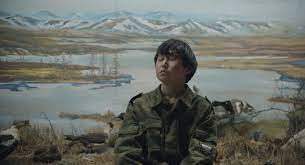Extending east from the Ural Mountains until it hits the sea and at over 5 million square miles Siberia accounts from almost three-quarters of Russia. It’s also one of the most sparsely populated regions on the planet. This is largely due to the climate, specifically the very short summers and long hard winters, when temperatures plummet dramatically. Its remoteness has been used, for centuries, by the Russian authorities as a perfect location to cite its penal colonies and gulags.
Most of the northern part of Siberia is covered in permafrost, which along with the ice has proved to be a great source for seekers of prehistoric creatures. Climate change is leading to more and more discoveries, as the land melts to reveal its secrets. in Holgut, a scientist (Semyon) sets out in search of in-tact cells containing the DNA of a mammoth. Meanwhile, a city dweller (Kyym) and local hunter (Roma) embark on a hunt for a rare and elusive reindeer
Holgut follows both journeys as they venture into the wild and desolate beyond. Whilst director Liesbeth De Ceulaer follows their travels with an observational eye, there’s much more to her film than mere documentation. She has a striking eye for the visual, capturing the beauty, majesty and savageness of the landscape. Combined with myths and legends of the steppes, Holgut weaves their quests into a poetic and thoughtful meditation on the nature of existence.
Holgut screens at CPH:DOX.














No Comment